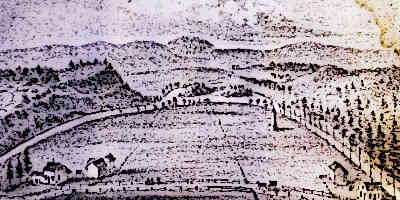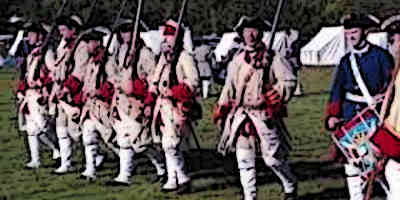Battle of Norridgewock
The Battle of Norridgewock took place on August 23, 1724, near the present-day Norridgewock in Maine. Read more about the Battle of Norridgewock >>
Battle of Pequawket
The Battle of Pequawket took place in the 18th century during the Colonial Period of North America Read more about the Battle of Pequawket >>
Battle of Winnepang 1722
The Battle of Winnepang was a Naval Battle fought in July 1722 near Jeddore Harbour in Nova Scotia. Read more about the Battle of Winnepang 1722 >>
When and where did the war take place?
The Dummer’s War was fought from 1722 to 1725. It took place along the frontier between British and French colonies in the New England and Nova Scotia regions.
Other Names for the Dummer’s War
The Dummers War is also known as the following:
- Father Rale’s War
Lovewell’s War
Greylock’s War
Three Years War
4th Anglo-Abenaki War
Wabanaki-New England War of 1722–1725
Battles of the Dummers War
- Battle of Norridgewoc
Battle of Pequawket
Battle of Winnepang
Who fought in the war?
The war was fought between British colonies and allied tribes at one side, and the Wabanaki at the other side with some French support. The Indian tribes allied with the British included the Mohawk. The tribes that comprised the Wabanaki Confederacy included Pequawket, Mikmaq, Abenaki and Maliseet.
Background of the war
In 1713, the French Acadia colony came under British control. The British colonial authorities reorganized it as the Nova Scotia province. Although the French gave up the Nova Scotia territories as part of a treaty, the Wabanaki who lived in the area refused to ratify the treaty.
The contested territories were located between the Kennebec River and Isthmus of Chignecto. When British colonists started arriving in the region, this angered the Wabanaki tribes who started attacking them.
Why was it called Dummer’s War?
Dummer’s War was named after William Dummer who was the Lieutenant Governor of the Province of Massachusetts Bay. Dummer oversaw the involvement of Massachusetts in the war and became the key British leader during the course of the war.
Events Leading to the War
As more and more British settlers arrived in the disputed region, Wabanaki increased the frequency of their raids. These raids included concerted attacks on British fishing settlements and fortifications as well. In response to these raids, British colonial governor invited the Wabanaki to a meeting in 1717 in order to reach an agreement. At the meeting, the Wabanaki reasserted their right to the disputed lands and the issue remained unresolved.
The Fighting
When the Wabanaki could not be persuaded to stop their raids through talks, British Governor Shute decided to use force. He suspected French Jesuit priests in the Indian villages to be the instigators behind the raids. So he sent a colonial force to attack and arrest one of them.
This marked the beginning of the war. Soon, the war spread all along the frontier. The eastern theatre of the war stretched over Maine and New Hampshire. The western theatre of the war was in Vermont and western Massachusetts. Some of the key battles were also fought in the Nova Scotia theatre.
Result and Aftermath
Despite the long and protracted war, British forces were unable to gain the upper hand. The Wabanaki continued their raids and although exhausted, they didn’t submit to British demands. By 1724, both the British colonial authorities and the Wabanaki wanted peace.
This ultimately led both sides to sign a peace treaty in 1725. In the treaty, British authorities acknowledge the rights of the Mikmaq and Maliseet tribes with regard to the disputed territories in Nova Scotia.


